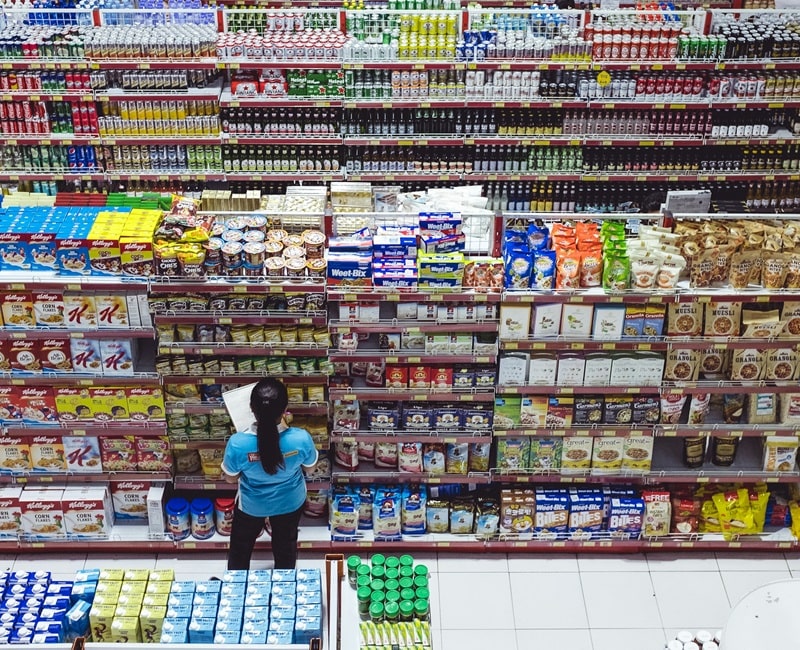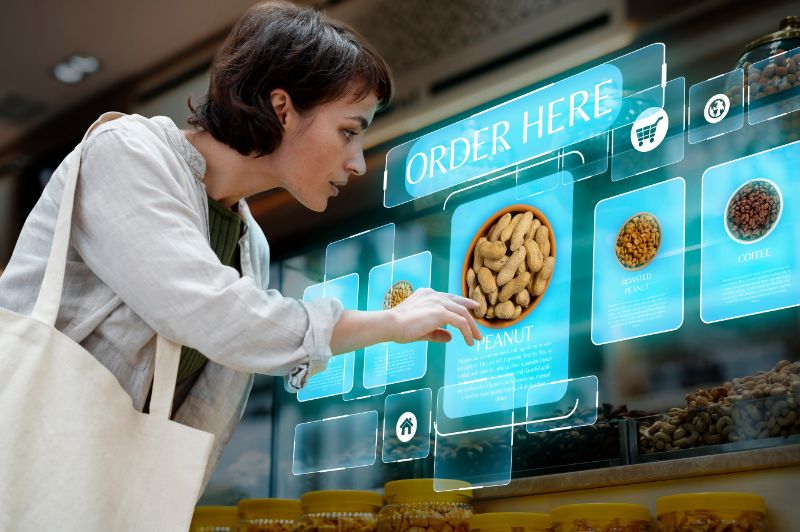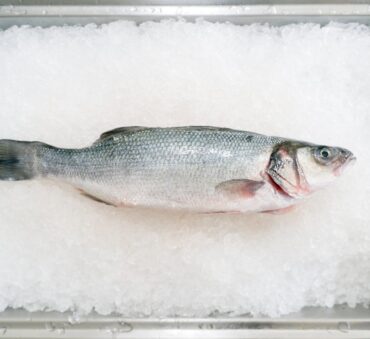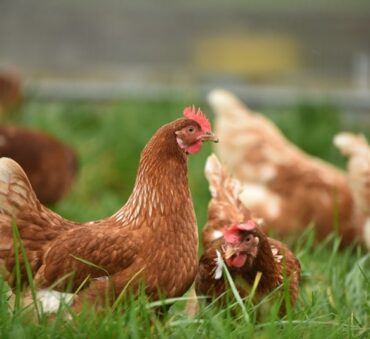Food waste has become a global crisis with serious environmental, economic, and social implications. Today, roughly one-third of food produced for human consumption is lost or wasted globally, with food waste in the United States being one of the biggest contributors to waste.
As technology evolves, so do food waste management strategies, with recent advances in technology opening a new opportunity to leverage artificial intelligence (AI) and machine learning (ML) to mitigate food waste across various sectors.
To better understand the potential of new technology, this article discusses how AI and ML could revolutionize food waste management, discussing best practices for using AI to reduce food waste and potential hurdles in adopting AI food waste management.
Key Takeaways
- Food waste AI is emerging as an innovative solution to reduce waste within the supply chain, with one of its key advantages being its real-time monitoring capabilities, which allow businesses to quickly recognize and address issues as they arise.
- Perhaps its biggest advantage is its role in forecasting, as accurate demand forecasting leads to smarter production and stocking decisions in the retail and production sectors.
- Predictive analytics uses data to predict future trends and events, which in turn aligns production and supply with consumer demand, potentially reducing overproduction and waste.
- AI-driven systems can analyze large amounts of data to streamline internal processes, such as monitoring and optimizing quantities, cycle times, temperatures, downtime planning, communication, employee training, and warehouse management.
Understanding the Food Waste Problem
Food waste is a critical issue that demands immediate attention, affecting not only the world but also our own communities. There are many consequences to food waste, with environmental concerns being among the top priorities. So how does food waste affect the environment?
To start, food waste in landfills produces more methane emissions than any other landfilled material, with an estimated 8-10% of global greenhouse gas emissions associated with food that is not consumed. This is due to the slow decomposition process that food waste undergoes in landfills, leading to the production of a powerful greenhouse gas that contributes to global warming.
Additional environmental consequences of food waste include the waste of natural resources, degradation of land, air and water pollution, and a loss of biodiversity.

The economic impact of food waste is also worth mentioning, as farmers, small businesses, large organizations, and households are all affected by food waste. Around the world, food wastage costs around $750 billion annually to food producers, with the United States alone losing an estimated $218 billion, or 1.3% of GDP.
With as many as 828 million people around the world affected by hunger, there’s an urgent need to reduce the amount of waste produced, increase food donation efforts, and find more sustainable solutions that address food insecurity. And since food waste must be addressed at every stage of the supply chain, from production to consumption, the use of AI for food waste can help create a comprehensive strategy that addresses all levels.
How Can AI Help with Food Waste Management?
Food waste recycling and management technology addresses many issues in the supply chain, offering innovative solutions to the collection, treatment and recycling, and prevention of food waste. One of the ways that technological advances are changing supply chain management is through predictive analytics. Predictive analytics uses data to predict future trends and events, which in turn aligns production and supply with consumer demand, potentially reducing overproduction and waste.
By incorporating food waste AI into every aspect of the supply chain, food waste can be reduced in large numbers, offering huge environmental benefits. Keep reading to better understand how different stages of the supply chain can leverage AI for food waste.
AI in Production and Retail
Food waste in production and retail is a huge problem, with changes in consumer trends and demand leading to large amounts of waste in both sectors. Issues in storage, expiration dates, and inefficient inventory and stock management also play a large role in supermarket food waste.
Luckily, AI and food waste reduction go hand in hand, with AI-driven systems making huge progress in inventory management. Machine learning inventory management analyzes large amounts of data to streamline internal processes, such as monitoring and optimizing quantities, cycle times, temperatures, and downtime planning. It also makes warehouse management easier by optimizing logistic tasks, improving communication, and providing employee training.
Perhaps its biggest advantage is its role in forecasting, as AI forecasting combines detailed sales data with real-time customer insight for a deeper understanding of consumer behavior. The benefits?
With overproduction being a huge contributor to food waste, accurate demand forecasting leads to smarter production and stocking decisions in the retail sector. However, its success depends on the collaboration between producers and retailers, as manufacturers can adjust their production based on more accurate demand.
AI’s ability to transform inventory management makes it a great tool for retailers and producers that aim to increase their sustainability efforts. Aside from environmental benefits, the prevention of overproduction and reduced waste of perishable goods improves a business’ net income, making it a beneficial investment.

AI in Restaurants and Food Services
In the United States, food waste in restaurants equates to approximately 22 to 33 billion pounds of food waste, with poor forecasting, overproduction, improper storage methods, and a lack of food waste tracking all contributing factors. This results in considerable economic loss and severe environmental implications, including a loss of resources and increased landfill use.
The increased adoption of AI food waste management is an effective way to address these issues, transforming the industry’s approach to food waste. The use of AI-powered analytics helps restaurants track food usage patterns, predict customer demand with greater accuracy, and suggest menu adjustments to minimize waste.
A growing number of food establishments are using AI to reduce food waste, ensuring that they order optimal quantities of ingredients based on predictive analytics, reduce operational costs, and enhance sustainability efforts. A great example of this is the use of AI and data to optimize its supply chain by a large food chain in United States.
This chain uses AI food waste software to enable menus to change as customers place orders, promote certain items depending on environmental factors, and promote or withdraw items based on stock levels. The ability to influence customer demand helps them optimize the supply chain by providing tailored experiences to their customers, improving inventory management, and decreasing waste.

AI in the Supply Chain
Food waste occurs at every stage of the supply chain, from production to consumption. Among the many contributors to food waste in the supply chain, overproduction, improper supply chain coordination, poor packaging and transportation logistics, and inefficient inventory management are common reasons for spoilage.
Food waste AI is emerging as an innovative solution to reduce waste within the supply chain, with one of its key advantages being its real-time monitoring capabilities. This allows businesses to quickly recognize issues as they arise, allowing them to take immediate action to prevent spoilage. Some examples of how businesses can leverage AI food waste management include their ability to monitor temperature and humidity levels during storage and transportation, track inventory levels to prevent overstocking, and optimize transportation routes.
Data plays a crucial role in driving AI-powered solutions due to its ability to identify areas of waste and enable real-time decision-making. By analyzing and recognizing patterns and trends, AI optimizes various processes throughout the supply chain, giving rise to more sustainable practices during production, processing, distribution, retail, and consumption.
AI for Consumers and Households
Household waste is a large contributor to the total amount of waste generated. On average, households waste 31.9% of the food they buy. Common causes of food waste in households include a lack of awareness and education, improper food storage, overpurchasing, overserving, and a lack of understanding of food waste expiration dates.
New technology can help reduce waste in a variety of ways, such as helping plan shopping lists, suggesting recipes based on available ingredients, and tracking food expiration dates. Smart applications can also be utilized in households; smart refrigerators, for instance, offer real-time inventory tracking to help individuals better manage their products and keep track of expiration dates.
As AI and ML become more and more integrated into our daily lives, households now have access to convenient methods of reducing waste. This helps keep food out of landfills and offers families a new opportunity to reduce costs. To bring more awareness to the food waste crisis, an increase in campaigns, local initiatives, and the use of food waste AI technology are more important than ever.

Challenges in Implementing AI Solutions
Using AI to reduce food waste comes with multiple obstacles that must be addressed, one of which is the integration of new technologies into existing systems. Since this requires careful planning, businesses should work with IT professionals to ensure that the chosen AI technology works seamlessly within the existing infrastructure.
Businesses must also prioritize the quality of their data. Since AI systems require large amounts of data for accurate predictions, high-quality data is a top concern for successful AI integration. To ensure comprehensive data input, companies must invest in data quality and management.
As businesses adopt AI solutions, they must also take into account ethical privacy considerations that may affect data collection for AI training. Businesses can address this by creating ethical guidelines for AI development.
Working with developers, changing operations, and updating systems all contribute to another potential challenge, which is high upfront costs. While high initial costs may be hard for companies, especially small- and medium-sized establishments, businesses must consider long-term savings, both in time and money. There are also various government initiatives, such as tax incentives for reduced waste, that may help businesses justify high initial costs.
And lastly, there needs to be a big cultural shift regarding AI and machine learning. Since new technology often means changes to infrastructure and long-standing operations, there needs to be a company-wide acceptance of new innovative techniques. Businesses can do this by training their employees, encouraging open communication about questions and concerns, and stressing the importance of using AI to reduce food waste.
Opportunities & Benefits of Using AI
Widespread adoption of artificial intelligence can help companies, individuals, and whole communities create a more sustainable environment.
From an environmental standpoint, AI food waste management helps divert food from landfills, reduce greenhouse gas emissions, improve the management of energy and resources, and reduce pollution.
In addition, companies now have the opportunity to reduce costs associated with waste while simultaneously optimizing food distribution strategies. These strategies help businesses set a new standard for sustainability in their industry, all while having a positive impact on the community and addressing the food insecurity crisis.
Since there are many sources of waste throughout the supply chain, the increase in AI food waste technology means that companies can identify and address waste at production, retail, and consumer levels. This demonstrates the transformative potential of AI in creating sustainable, efficient food systems and the importance of embracing these technologies for a better future.
The Bottom Line
AI food waste management offers innovative solutions to food waste throughout the supply chain. Its ability to improve demand forecasting, enhance inventory management, provide insights on how to reduce waste, and streamline operations makes it a great solution for small businesses, large organizations, and households alike.
If your business is interested in fostering more sustainable practices and reducing large-scale waste, then we suggest partnering with a trusted food waste management company. At Shapiro, we leverage advanced technology to offer a variety of efficient solutions that are tailored to each unique business. Over the years, we have helped lower the carbon footprint of over 350 companies all over North America, and we continue to embrace new technology to enhance our solutions.
Contact us to learn more about our services.
Baily Ramsey, an accomplished marketing specialist, brings a unique blend of anthropological insight and marketing finesse to the digital landscape. Specializing in educational content creation, she creates content for various industries, with a particular interest in environmental initiatives.



